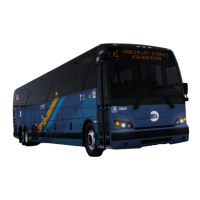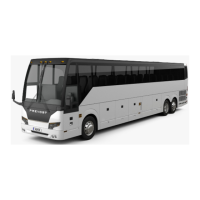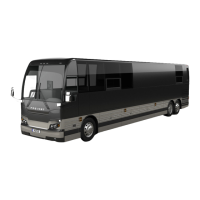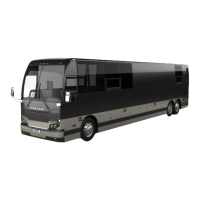DOB 1300-1556 | X3-45 Commuter PA-1648 Maintenance Manual First release Oct 2020
3 POWER STEERING GEAR
FIGURE 2: POWER STEERING GEAR 14035
3.1 DESCRIPTION
The power steering gear is located in the lower
part of front service compartment (Figs. 3 & 4).
The housing of the ZF/Robert Bosch-Servocom
contains a control valve, working cylinder and a
complete mechanical steering gear. The
pressure oil for the steering is delivered by a
motor-driven oil pump which is supplied with oil
from an oil tank.
The housing is designed as a cylinder for the
piston, which converts the rotation of the
steering shaft and the worm into an axial
movement and transfers this to the steering
worm sector shaft. The serration of the sector
shaft is straight-cut with a high surface quality in
such a way that it is only possible to set a
unique setting without play on installation in the
straight-ahead driving area by means of the two
eccentrically designed lateral housing covers.
The piston and worm are connected via a ball
chain. When the worm is turned, the balls are
collected by a circulating pipe at one end of the
chain and fed in again at the other end, thus
producing an endless ball chain.
The control valve consists of the valve slide in a
needle bearing in the worm, with six control
grooves on the circumference and the control
sleeve on the worm, which also has six control
grooves. The valve slide, designed with steering
shaft connection, turns together with the worm
as the steering wheel is turned.
FIGURE 3: FRONT SERVICE COMPARTMENT 18611
A torsion bar, which is pinned with the valve slide
and the worm, keeps the control valve in the
neutral position as long as no opposing force is
applied to the steering wheel. The steering
housing contains a pressure relief valve, which
limits the discharge pressure of the oil pump to
the maximum value required. A replenishing
valve can also be used, through which oil is
sucked from the return if steering is not
hydraulically boosted.
Compared with constant ratio, steering versions
with variable ratio are more directly designed in
the center area than outside the center area. The
resulting smaller steering corrections benefit
steering behavior in straight-ahead driving. At the
same time, the indirect transmission means that
there is a higher hydraulic torque available at the
steering arm in parking movement. If the
hydraulic assistance fails, the operating forces on
the steering wheel are correspondingly lower in
this area. This is achieved through a
piston/steering worm sector shaft serration with
differing modulus and angle of pressure.
Upon transfer of a torque from the steering shaft
to the worm, or vice versa, the torsion bar is
deformed in the elastic area so that there is
torsion between the valve slide and the control
sleeve. When the steering wheel is released, the
torsion bar ensures that the valve is returned to
the neutral position.
Refer to the "ZF-SERVOCOM Repair Manual"
and “RB Robert Bosch Servocom - Service
Manual (8090)”, found on your Technical
Publications USB flash drive, for the
functional aspects and maintenance
procedure of the steering gear.

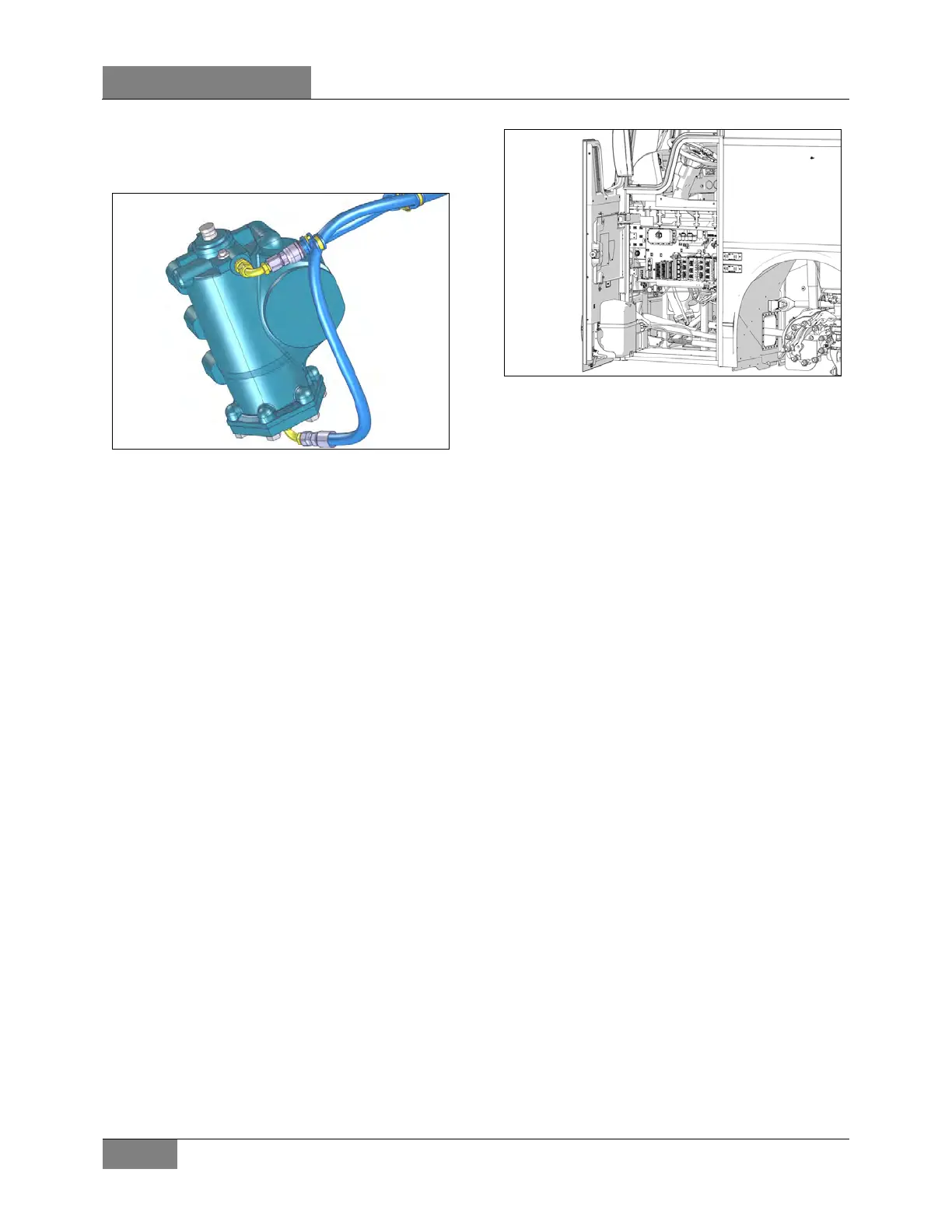